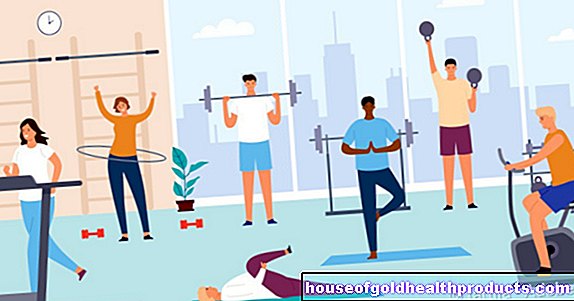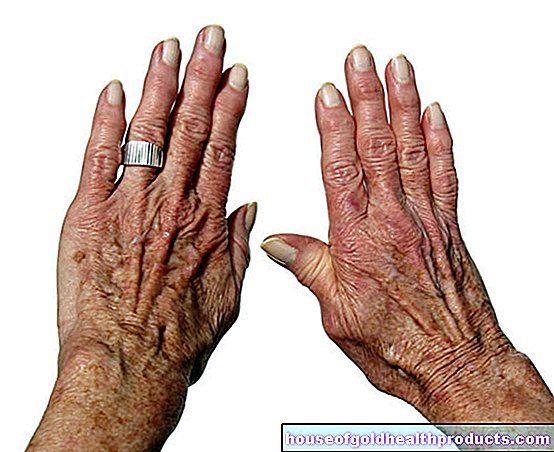One-legged stance: Providing information on the risk of stroke
All content is checked by medical journalists.MunichFor yoga athletes, the one-leg stand is a small thing, but for most people a very shaky affair. How long you hold out reveals something about the risk of stroke.
One, two, three - how long can you actually stand on one leg? Scientists at Kyoto University in Japan have now found that the length of time a person can keep one-legged balance provides an indication of how healthy their brain is. Anyone who tips over after just a few seconds is at a higher risk of having a stroke or of suffering earlier mental decline.
Unstable stance indicates broken blood vessels
An unstable stance is often related to small damage to the blood vessels in the brain, according to Dr. Yasuharu Tabara, author of the study. He and his team examined almost 1,400 men and women with an average age of 67 years for their stability. Participants were asked to stand on one leg with open eyes for as long as possible in two attempts. In addition, the mental abilities of the subjects were tested with questionnaires and their brains were scanned with a magnetic resonance tomograph (MRT) for possible vascular damage.
It showed that the shorter someone was able to keep their balance, the more vascular injuries the researchers discovered in their brain. In particular, participants who could not stand on one leg for more than 20 seconds had more brain changes such as microbleeding or lacunar cerebral infarction - smaller vascular occlusions in the brain. These injuries often do not cause symptoms in everyday life, but increase the risk of subsequent strokes or mental decline. Approximately 15 percent of the subjects with a single visible injury to the brain had balance problems and 30 to 34.5 percent of those who had two injuries in the MRI.
Mortality is also related to steadfastness
The one-leg stance is a simple test to find out the risk of a heart attack or mental decline, says Tabara. It could be used to identify people at risk, investigate them further and treat them at an early stage.
Another study from England had also found that physical abilities, including stability when standing on one leg, are related to health or mortality. Statistically speaking, those who did worse in physical exercise died earlier. (vv)
Sources:
Tabara Y. et al. Association of Postural Instability With Asymptomatic Cerebrovascular Damage and Cognitive Decline. Stroke. 2014. doi: 10.1161 / STROKEAHA.114.006704
Cooper, R. et al. Physical capability in mid-life and survival over 13 years of follow-up: British birth cohort study. BMJ 2014; 348 doi: http://dx.doi.org/10.1136/bmj.g2219
Tags: book tip hospital parasites





























